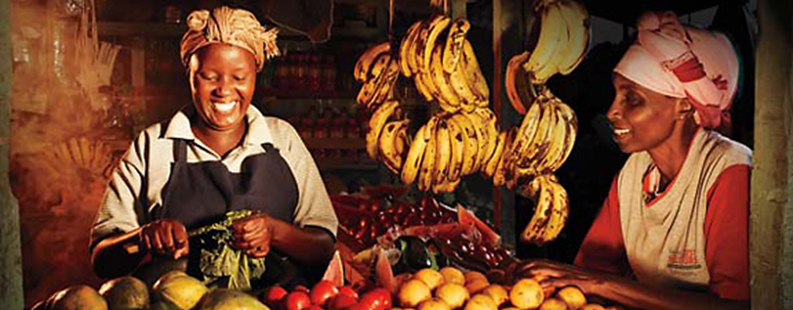Lighting Africa Featured in Fast Company Magazine

BY: NATE BIRD
An innovative program aims to light up off-the-grid Africa by boosting supply and demand for portable solar lamps.
FOR NEARLY 600 million people in sub-Saharan Africa, sundown means living, working, and studying by flickering candlelight or polluting kerosene lamps. Rural electrification is proceeding, but it’s outpaced by population growth. So Lighting Africa, a program of the World Bank and the International Finance Corp., is taking a different tack to try to improve the lives of Africans who are not on the grid. By working with private companies and cooperative governments, the group wants to kick-start a functioning market for affordable, efficient, and clean off-the-grid lighting products, including solar lamps.
 |
| Commerce goes on at an evening market, thanks to a solar-lighting initiative that helps private companies do business in sub-Saharan Africa. | Photograph courtesy of Lighting Africa |
Call it market manipulation for the good.
With prices for solar portable devices falling, a market probablywould have developed on its own. Eventually. “The question is how long it would take — and how many setbacks there would be,” says Dana Rysankova, a senior energy specialist at the World Bank who manages the Lighting Africa program. One such stumbling point has been the prevalence of mediocre solar products in Africa. Cheap lamps or flashlights that break after only a few weeks “are creating a really bad name for solar lights,” Rysankova says.
Lighting Africa starts by giving away solid research about African markets to interested manufacturers. “They do not necessarily know what they’re stepping into,” says Lighting Africa communication consultant Benedicte Walter. “We do the market research for them.” The team has developed what is basically a how-to guide — a detailed analysis of the market and consumers’ needs — that is available free online for companies that register on Lighting Africa’s website. “I have every one of our African employees read that,” says Sam Goldman, cofounder of d.light, an off-the-grid energy company active primarily in Asia and Africa. “I love it.”
Lighting Africa shares with manufacturers the $6,000 cost of testing products that pass an initial screening. So far, eight solar devices from six makers, including d.light’s Nova S200 solar lantern, have met the program’s standards.
To make it easier to sell these products, Lighting Africa — which is now active in six sub-Saharan nations — advises governments to reduce or eliminate import duties, and partners with rural electrification programs to create incentives for their underserved customers to buy solar lights. “We’re actually lucky in that there’s very little convincing required,” says Kate Steel, an energy specialist at the World Bank. “The governments and the utilities that we’ve worked with have been very enthusiastic about the products.”
None of this pump priming would matter without customers who are willing and able to buy Greenlight Planet’s Sun King, say, or Barefoot Power’s Firefly 12 Mobile. And getting buyers is a challenge. In rural Kenya, Tanzania, and Mali, for example, kerosene can eat up nearly 15% of household income, but the up-front cost of a day’s supply is small. Solar devices that meet Lighting Africa’s standards last longer and cost less over time, but they run from $22 to $97 — a significant investment for poor families. Convincing consumers to make a big purchase can be difficult, so Lighting Africa works to persuade banks and microfinance institutions to ease lending to consumers in the market for solar lights.
International support for the effort has been growing. The program has attracted funds from the U.S. Department of Energy, as well as from the governments of Italy, the Netherlands, and a dozen other major carbon-producing countries. In the past 18 months, Lighting Africa has spent less than $9 million on its off-the-grid efforts, which have already brought better light to some 950,000 people. Lighting most of off-grid Africa and creating a market that functions without donor support are still, however, distant goals.
 A version of this article appears in the July/August 2011 issue of Fast Company:
A version of this article appears in the July/August 2011 issue of Fast Company:
https://www.fastcompany.com/magazine/157/lighting-africa-solar-power-sub-sahara

